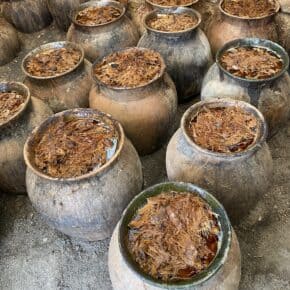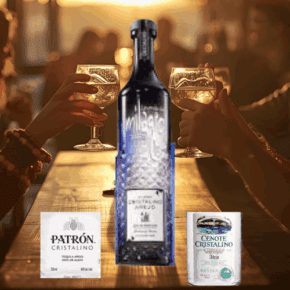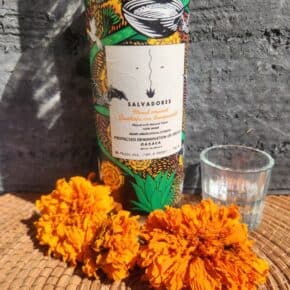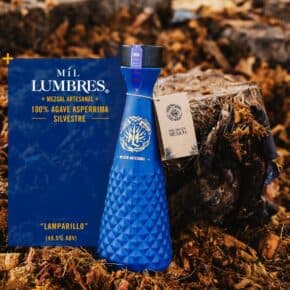Levadura is the Spanish word for yeast. Of all the many steps in mezcal production, fermentation has one of the biggest influences on flavor–in fact, this stage is responsible for the majority of mezcal’s flavor compounds. So yeast is a big deal in the mezcal world.
Thousands of species of wild yeast float on the breeze, are carried by insects, and inhabit the crevices of distilleries–the tahona, the canoa, the fermentation tanks. Traditionally, mezcal is distilled from the juice of roasted agave fermented by these wild yeasts, with added help from other microbes. The species of yeasts endemic to a mezcal-producing region (and the genetic variations within those species) contributes to the terroir of agave spirits.
At the beginning of the fermentation process, the juice and fiber extracted from cooked agave sits in an open tank. Ambient yeasts settle in the liquid and multiply. Mezcaleros monitor the aroma and temperature of the fermenting mass. When they deem the time is right, they add water and stir the mixture–a process called formulation. The yeasts continue eating the agave sugar and converting it into alcohol. The fermenting mass is called mosto vivo.
As yeasts metabolize alcohol, they create additional compounds–esters and acids–that impart flavor. The sensory profile of the agave brew is influenced by the speed of fermentation. Yeast multiply faster in warm environments. Thus, many mezcaleros prefer to produce during the cool season when fermentation is slower–giving the yeast more time to create a complex aromatic profile. When the alcohol concentration of the mosto reaches a certain level, the yeasts begin to die off and eventually it’s time to distill.
The rules that govern mezcal production specify which type of fermentation tanks may be used to make different categories of mezcal (such as artisanal and ancestral), but don’t actually specify that ambient yeasts are mandatory. Relying on ambient yeast is typical but not universal–particularly in industrial production.
Very few tequila distillers rely entirely on ambient yeasts. They jumpstart fermentation by adding yeast. But that doesn’t mean the process is sterile or generic. Some distillers add a proprietary strain that they’ve isolated in their own distilleries.* Huge industrial tequila plants may ferment in sealed tanks for greater efficiency, but most tequileros prefer to ferment in open tanks–thus tequila is also shaped by ambient yeast and the microbial environment of the distillery.
Sources:
Mezcalistas
“How fermentation tanks influence the flavor of mezcal” by Omar Muñoz
“Where do mezcal flavors come from” by Omar Muñoz
*A Field Guide to Tequila by Clayton Szczech
The Oxford Companion to Spirits & Cocktails edited by David Wondrich
International Journal of Food Science and Technology
“Yeast competition during alcoholic fermentation of agave” by Erick D Acosta-García, Jesús B Páez-Lerma, Martha R Moreno-Jiménez, Juan A Rojas-Contreras, Nicolás O Soto-Cruz












Leave a Comment